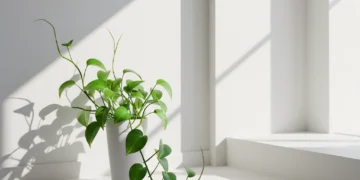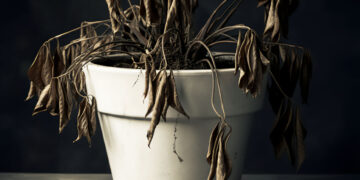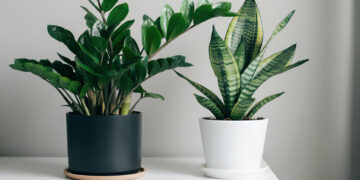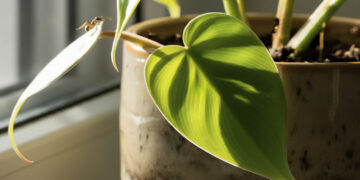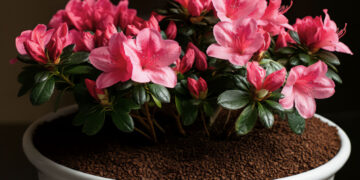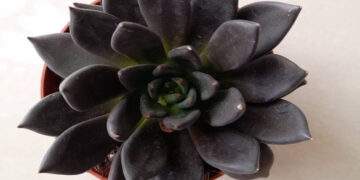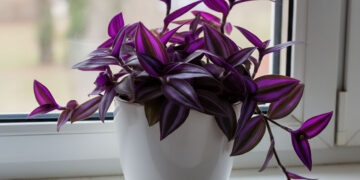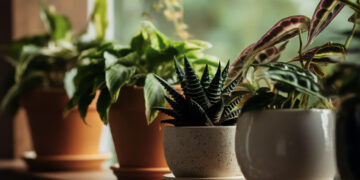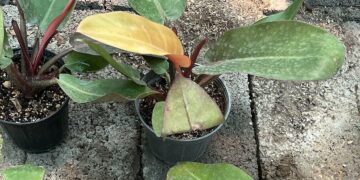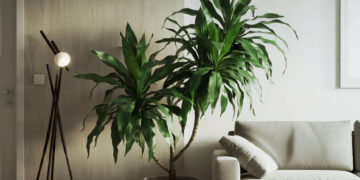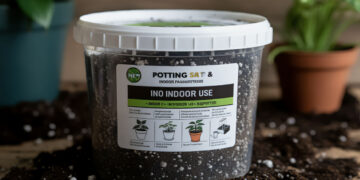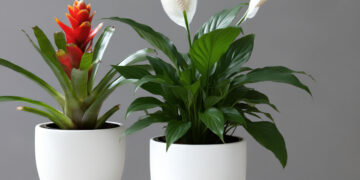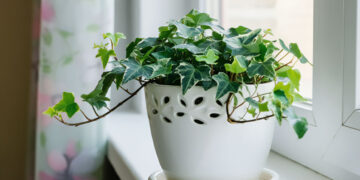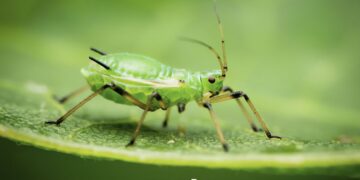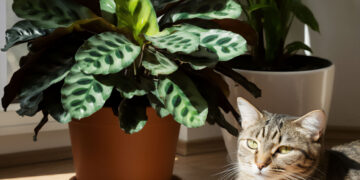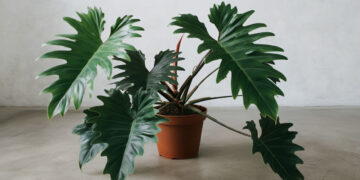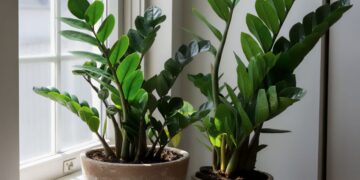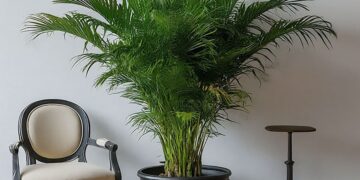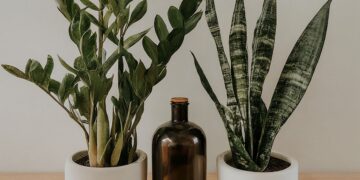Knowing where your houseplant first grew and what kind of climate it has will help you significantly keep it. Here, I will introduce some tropical houseplants that are not easy care houseplants.
Honestly, if you don’t have enough time or experience, it’s better not to go for these tropical houseplants. But like anything else, you have to start somewhere.
1. Alocasia (Elephant Ear)
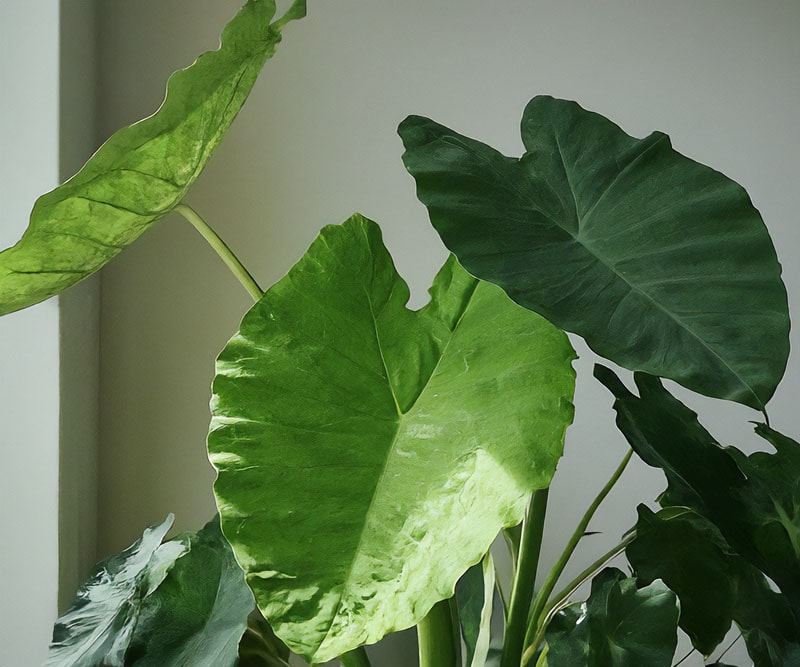
Alocasias are found in Southeast Asia.
This houseplant has large arrow-shaped leaves with impressive veins. In fact, dramatic foliage gives your home a tropical feel.
To care for these tropical houseplants, you must provide bright, indirect light and high humidity, soil with good drainage, and regular watering. Always keep the soil moist but not waterlogged.
Keep a close eye on it because it is sensitive to environmental changes. It is more likely to get houseplant diseases and be attacked by pests, and if the situation is not good, it falls quickly.
2. Bromeliads
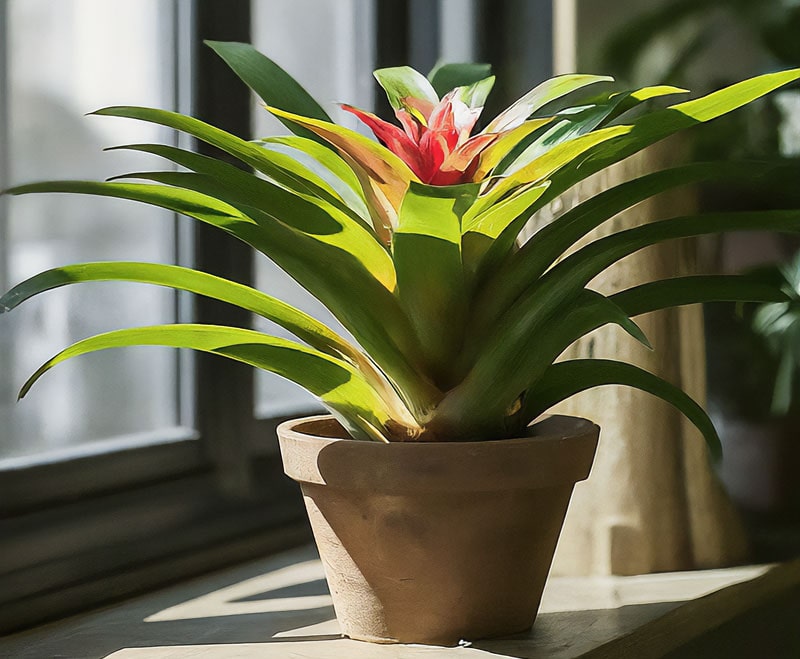
These colorful houseplants are native to Central and South America. Their beautiful rosette from leaves and never-ending flowers catch everyone’s eye. These tropical houseplants attach to objects or other plants and grow. This type of life is called epiphytic.
If you grow a Bromeliad in your house, you should know it hates cold weather, so put it in a warm place. I think somewhere with bright, indirect sunlight and moderate humidity is perfect. When it comes to watering, filling the central cup is enough. Keep the soil slightly moist.
Tip: If the watering is not managed correctly, your tropical indoor plant will rot.
3. Clivia (Clivia miniata)
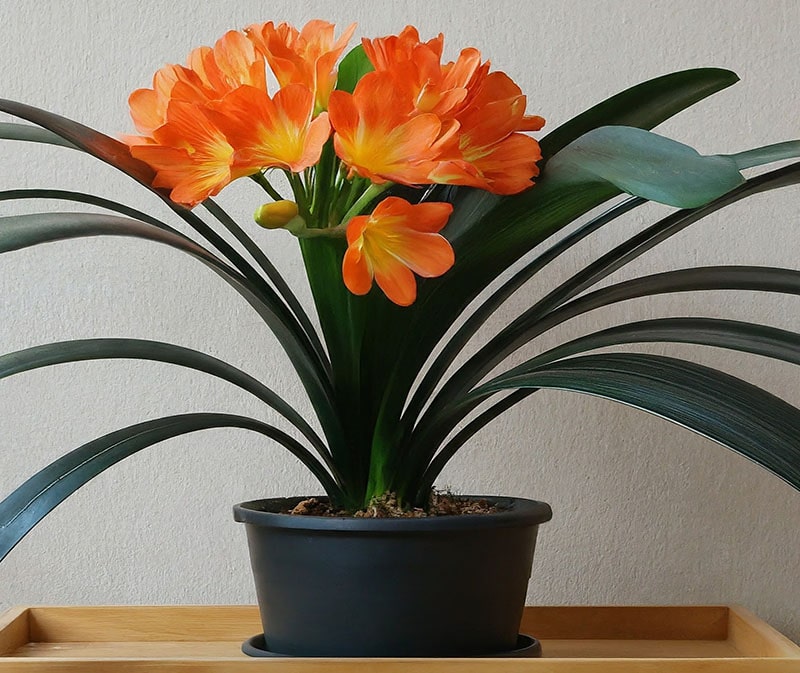
Clivias are hardy houseplants. Their orange or yellow flowers look lovely between the strap-like leaves, even in low light.
The origin of this tropical houseplant goes back to South Africa.
It usually prefers bright, indirect light and moderate humidity. If you want to see the blooming houseplant, Clivia needs a particular sleep period with decreased watering. Be careful that it is sensitive to over-watering. Allow the soil to dry between two waterings. If you want to avoid root rot, use the best soil for houseplant with proper drainage.
4. Nerve Plant (Fittonia)
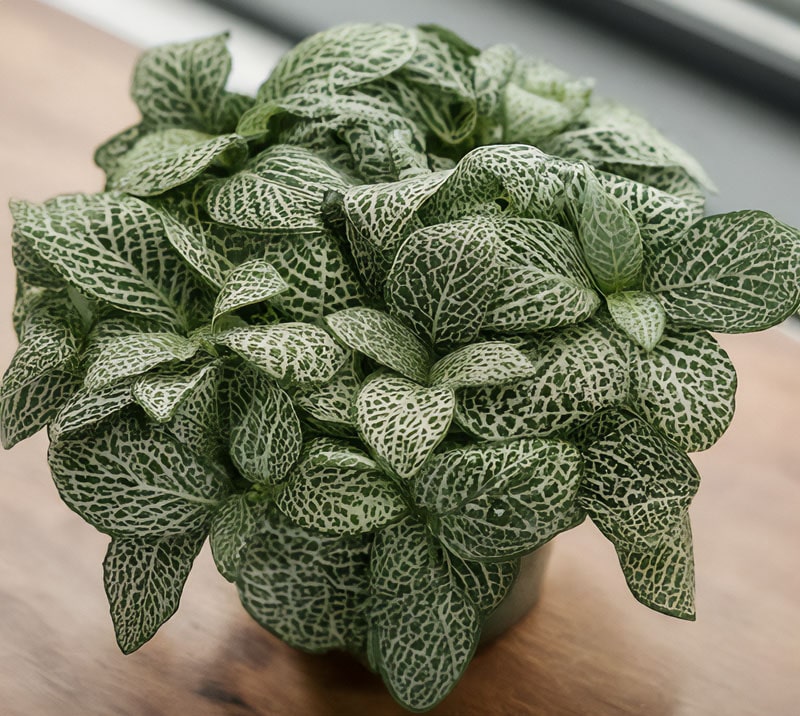
Nerve plants grew naturally in South America. The small and vibrant leaves with white and pink veins fascinated me. I take care of it as a terrarium, but it is also suitable for small indoor gardens. This tropical houseplant needs bright, indirect light and high humidity to grow. It is better to mist frequently to maintain humidity. You should water it regularly and keep the soil moist. If its conditions are not good, it will get angry and wither.
5. Staghorn Fern (Platycerium)
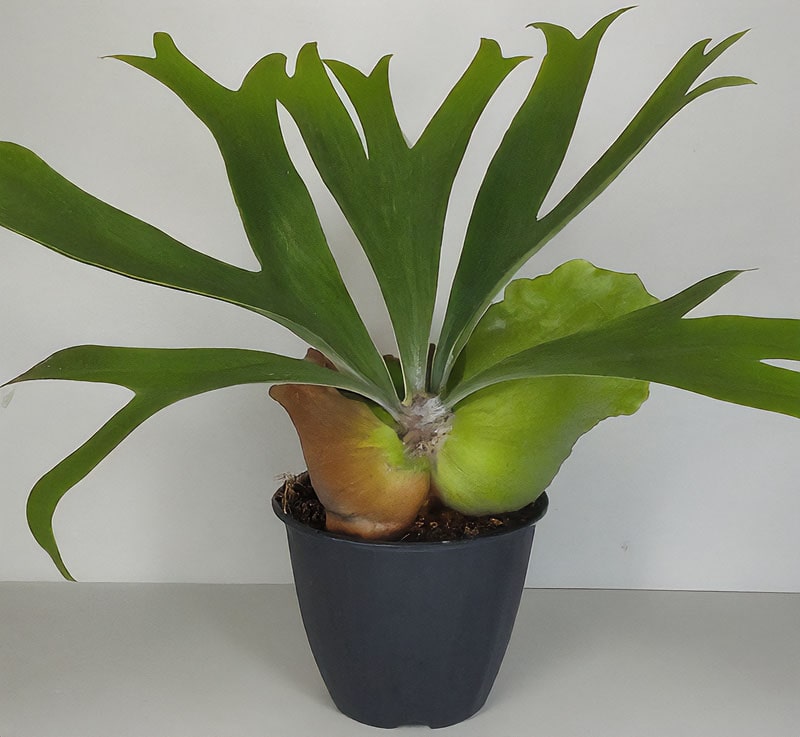
The hanging houseplants are found in all tropical regions around the world, especially in Southeast Asia and Australia. They have horn-like leaves horn-like leaves and grow on a houseplant pot instead of in a houseplant pot.
You may have seen these tropical plants as decorations on plaques or hanging baskets.
It would help if you learned that a tropical houseplant needs bright, indirect sunlight and high humidity. I water it by soaking the root ball and misting it regularly to prevent root rot.
6. Chenille Plant (Acalypha hispida)
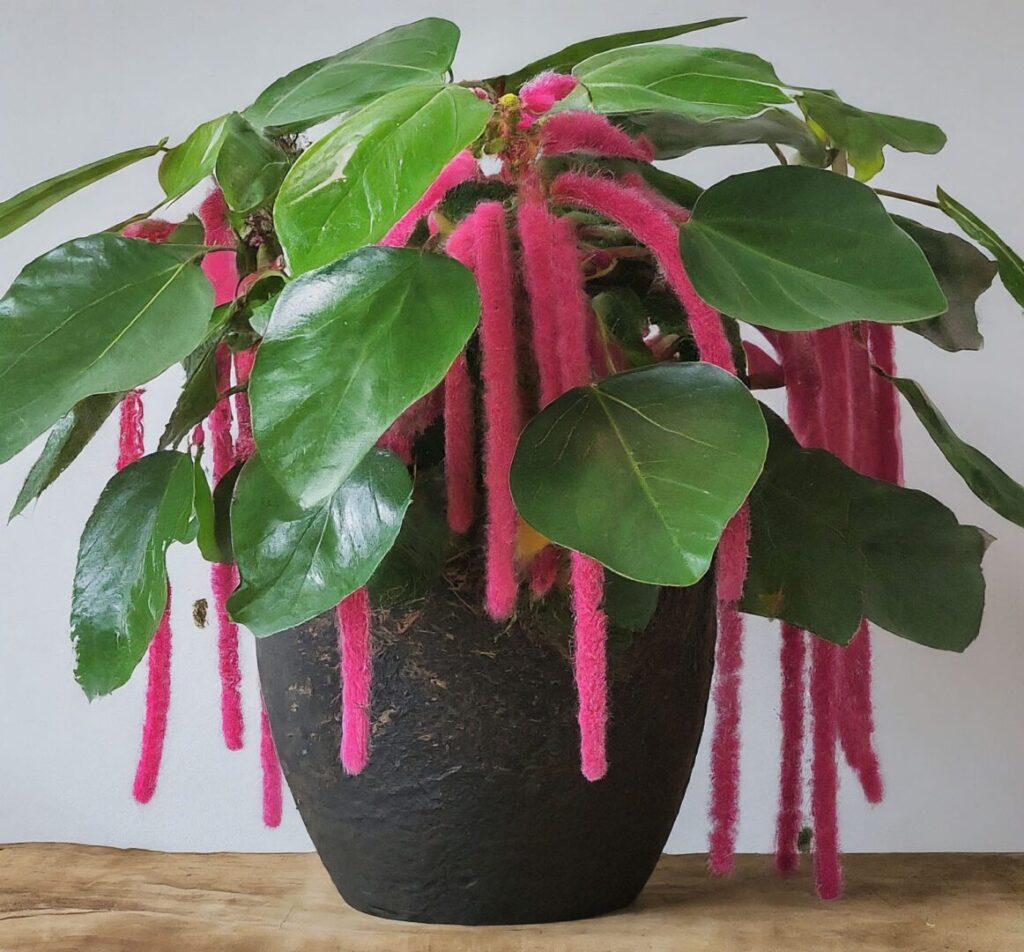
The first home of Chenille Plants was the South Pacific islands. This tropical houseplant’s long, dark, catkin red flowers look like chenille yarn.
The flowers are not always red; sometimes they have a slight pinkish hue.
It loves bright, indirect light and high humidity. Soil with proper drainage is helpful. Keep it moist. The possibility of being attacked by spiders and other pests is very high.
The secret of my houseplant’s shape and regular flowering is that I prune it regularly.
+1. Dwarf Banana Plant (Musa acuminata)
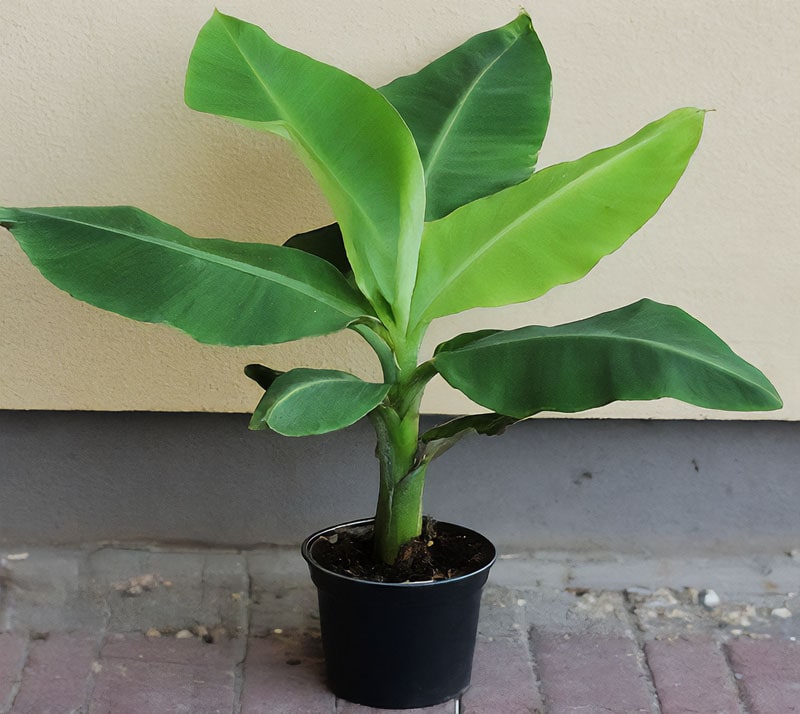
The large houseplant is native to East Asia. It has large paddle-shaped leaves and bears fruit. About caring, you should know that standard drainage soil and watering are not enough. Unlike other houseplants, houseplant lightning is different. This houseplant needs bright, direct light and a tropical outdoor setting to grow. Because it grows a lot and becomes very large, so it’s expected that you don’t see a Dwarf Banana Plant in every house.
Be careful. This houseplant is defenseless against pests houseplants and diseases; take care of it so its health is not endangered.
Now, are all these difficulties worth the care of these houseplants? But if you decide, for any reason, to keep one of the houseplants that isn’t easy to care for at home and have any questions, don’t hesitate to ask me in the comments below.
